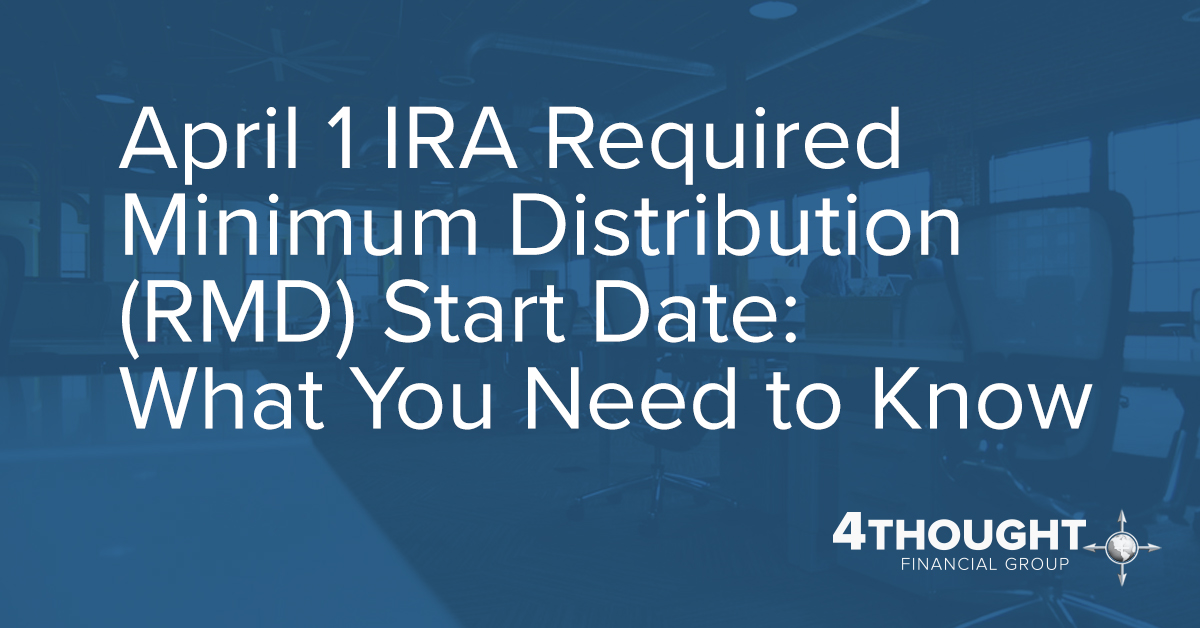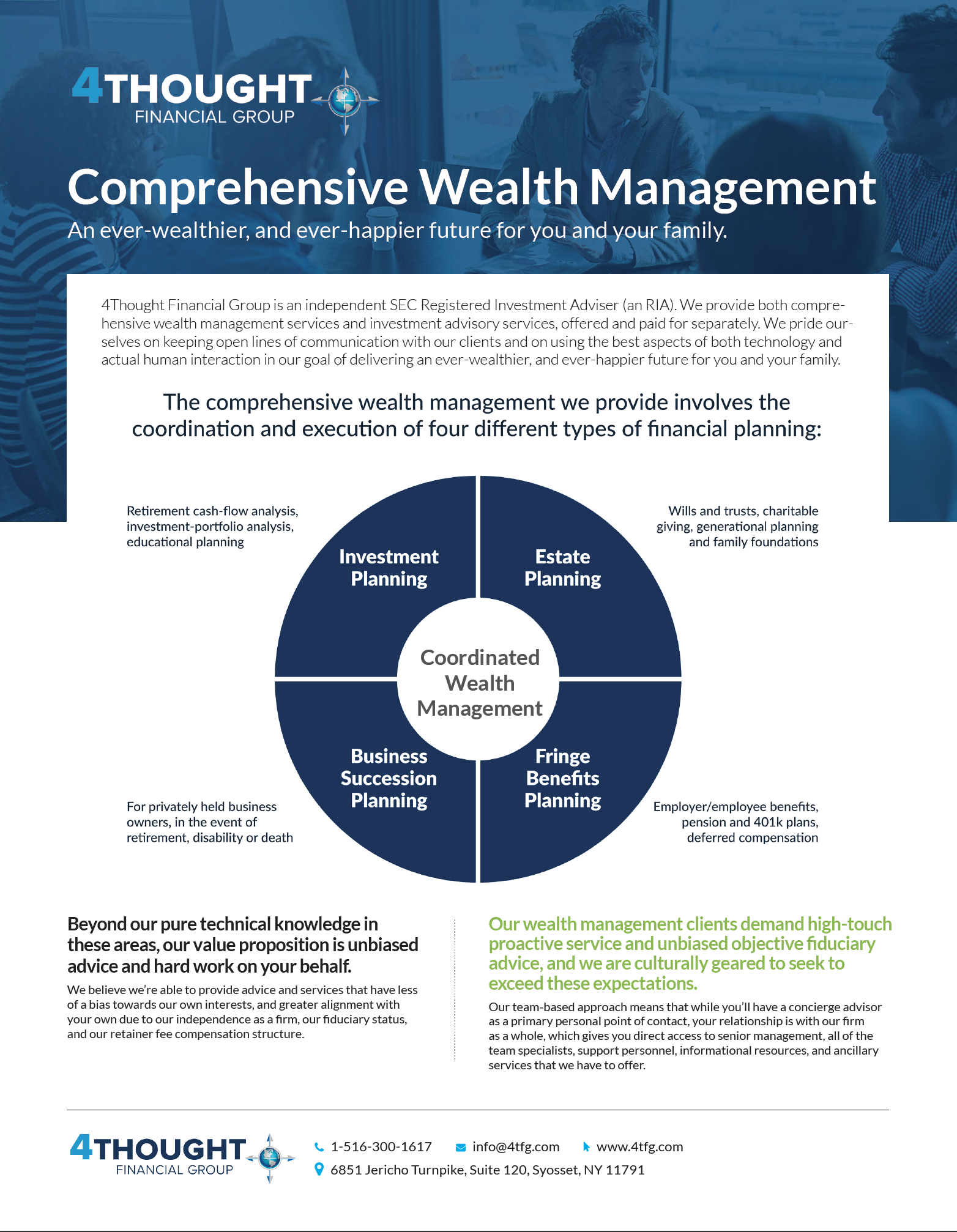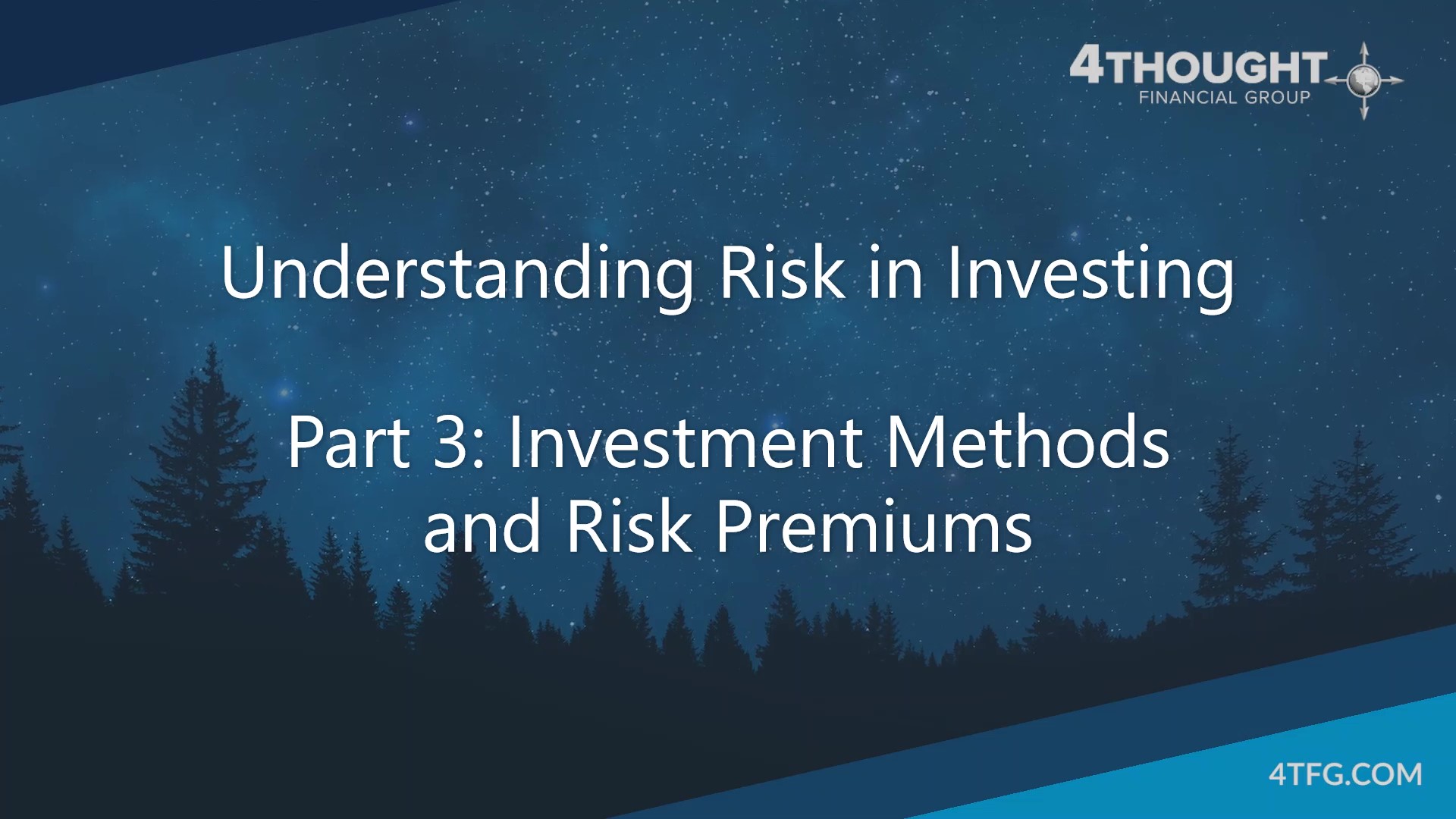

Wealth Management by 4Thought Financial Group
"The comprehensive wealth management we provide involves the coordination and execution of four different types of financial planning: Investment Planning, Estate Planning, Business Succession Planning and Fringe Benefit Planning."
Besides the infamous April 15th tax return deadline looming this year, there is also the infamous April 1st date.
Why is this date also infamous?
It is the “Required Beginning Date” (RBD) for Required Minimum Distribution (RMD) withdrawals from traditional IRAs following the year the IRA owner turns 70 ½. This is only the beginning. Every year thereafter, withdrawals must be taken. The result is more taxable income and income taxes. Ouch! With more and more boomers turning 70, this date will live on in infamy until the IRS changes the rules.
For example, if Robin is turning 70 on May 30 this year, on November 30 she will be 70 ½. So now comes April 1, 2020, which represents her “required beginning date” (RBD) for withdrawals from her traditional IRA. If she fails to take that withdrawal, she would be penalized with a 50% excise tax. So now you understand why April 1 is an important deadline with some important consequences from an income tax (and potentially an excise tax penalty) point of view.
As with every rule, there are opportunities and exceptions.
The traditional IRA RMD withdrawal is calculated based on Robin’s life expectancy (from an IRS table). Per the table, called the “Lifetime Required Minimum Distributions,” at age 70, Robin’s life expectancy is 27.4 years. To calculate the amount of the withdrawal, the December 31, 2019 balance would be divided by 27.4. Robin will also turn 71 in 2020, and for her second “required minimum distribution” (RMD), she will need to take her withdrawal by December 31, 2020 and for each year thereafter. In 2020, at age 71, Robin's life expectancy is now 26.5. As Robins gets older, her life expectancy gets shorter. At age 80, her life expectancy is 18.7. Herein lies the problem: The older she gets, the shorter the life expectancy, and the higher the taxable distribution. That’s why pre-planning for this inevitability is important.
Here is where the potential planning opportunity may be: Robin can either take one withdrawal in 2019, or two withdrawals in 2020. Either works to satisfy the requirement and avoid the excise tax penalty. I would recommend meeting with your tax professional to determine the best choice. Remember, this is only the “minimum” amount required to be withdrawn. Additional amounts can be withdrawn based on cash flow needs, income tax brackets and family circumstances.
There’s good news! We are living healthier and working longer. Certain qualified plans, such as Tax Shelter Annuities, 401(k) and 403(b) allow you to delay withdrawals if you are still working. Also, in certain instances, life expectancy can be based on the joint ages of the holder of the retirement plan and their beneficiary.
4Thought Financial Group
For more information on the above as well as to review budgeting and cash flow needs, please contact 4Thought Financial Group at info@4tfg.com for additional information on how to best plan for your financial future.








Leave a Comment